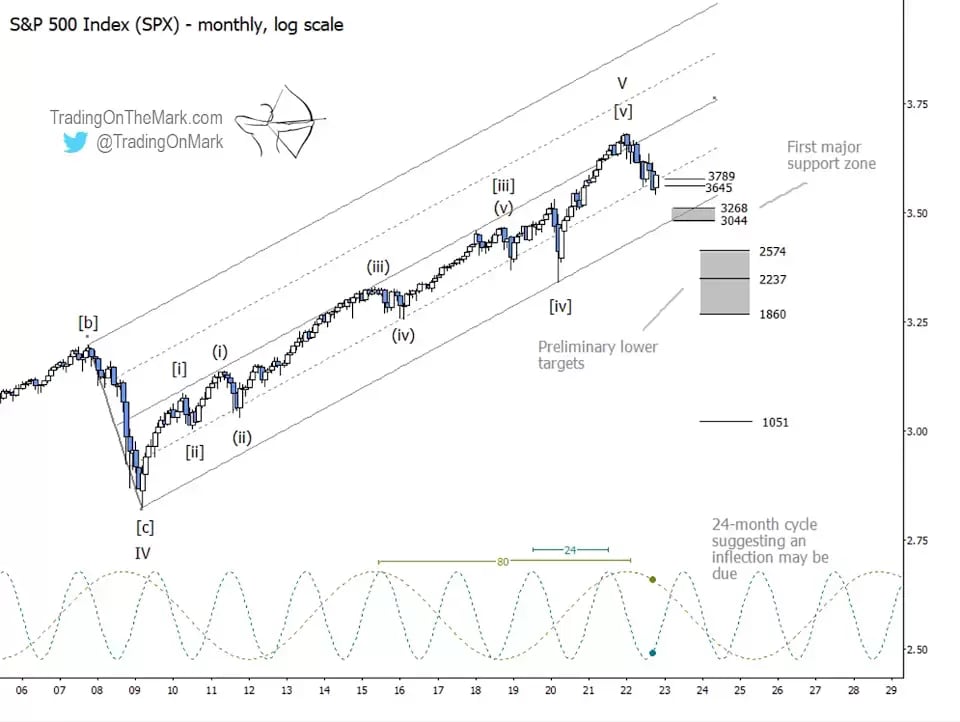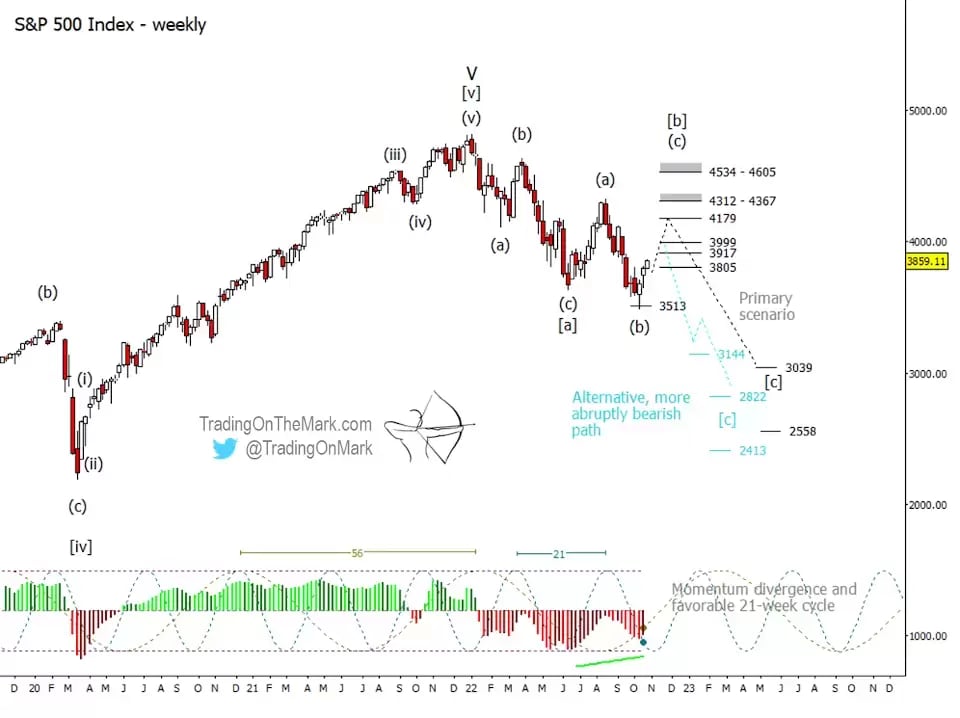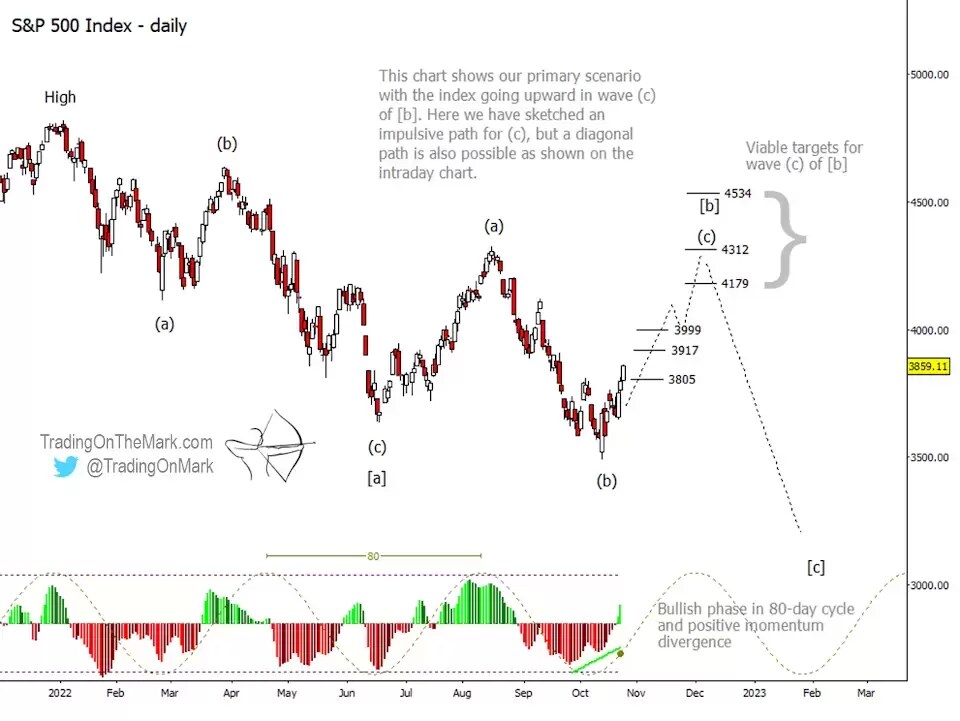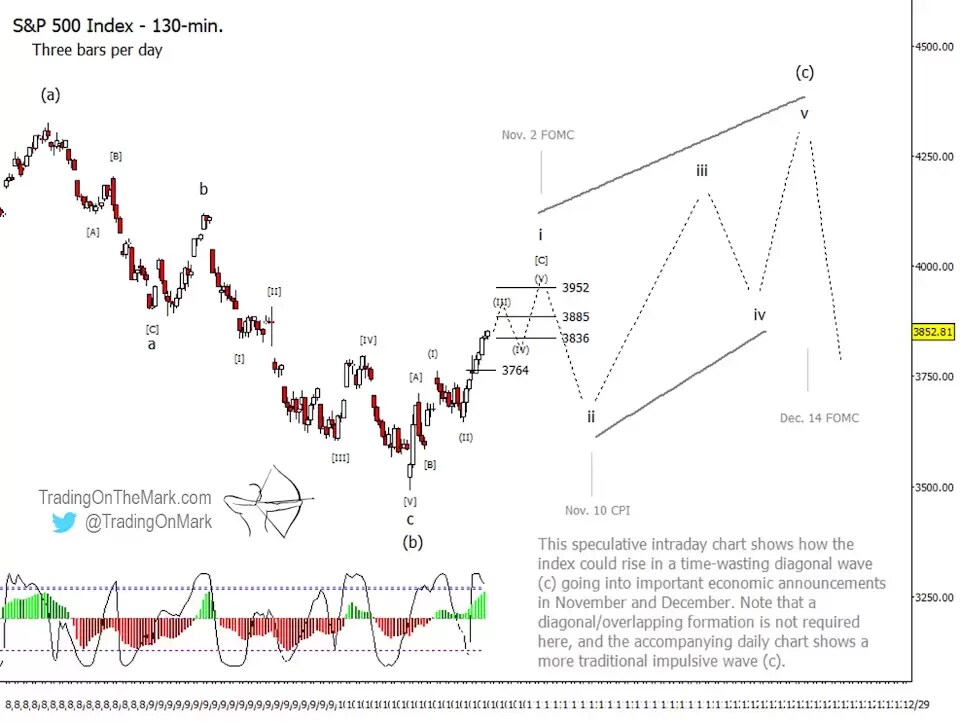We expect a bullish trading environment in US equity indices during the next two weeks and possibly into December, say Kurt Hulse and Tom Pizzuti of technical analysis firm Trading on the Mark.
Our analysis of the S&P 500 looks at various time frames to show some potential scenarios and highlight areas to watch. The monthly chart below shows our main scenario. The market made a durable high at the start of 2022. Ideally we would like to see a test of the area near 3,268 and 3,044 before we consider that the corrective pattern might be complete. However, in the near term, we expect a bounce from the current area.

On the weekly chart below, we have drawn two competing scenarios. Both are bullish in the near term, and we believe the bounce started last week.
If the index can rise above approximately 3,999, that would increase our confidence in the primary scenario and would make targets viable at 4,179, the zone between 4,312 and 4,367, and the zone between 4,534 and 4,605.
Alternatively, a test and retreat from one of the lower resistance areas at 3,805, 3,917 or 3,999 would make possible a re-test of the 3,513 support. If that area were to fail, we could see the index cascade into the areas near 3,144, 2,822, and 2,413.
Note that our favourite momentum indicator is showing positive divergence on the recent low forecasting a bounce or consolidation. The 21-week cycle is also consistent with a low here.

If the index is currently climbing in wave (c) of [b], as shown in our primary scenario, then wave (c) should consist of five sub-waves. On the daily chart below, we have sketched a path for wave (c) that is impulsive – that is to say, it does not have overlap between the first and fourth sub-waves.
Typically, Elliott Wave traders do best when they try to catch third waves and "C" waves. The path drawn on the daily chart shows a typical form for a "C" wave, with the middle third wave being strongest.
On daily and faster charts, you may see price break above any of the resistance levels shown here and subsequently find support at the same levels.

Although the daily chart above shows wave (c) taking an impulsive form with a strong middle wave, we're a bit more partial to the idea of wave (c) forming an overlapping diagonal pattern as illustrated on the intraday chart below. This time-consuming pattern would allow the market to produce the typical end-of-year rally while still treating the rally as a bear-market bounce.
On the intraday chart below we have marked some important dates for US economic announcements on 2 November, 10 November and 14 December. Please keep in mind that this path is quite speculative. We'll be able to improve and fine-tune the forecast as more price data comes in, and we might end up rejecting the diagonal idea if structure begins to favour one of the other scenarios.

In the near term, we expect 3,764 to act as support if tested this week, and we would like to see price climb up the rungs to 3,836, 3,885 and possibly 3,952. The size and structure of completed wave 'i' will help us better forecast the rest of what we expect to be a five-wave move going into the end of the year.
For more technical analysis from Trading On The Mark, follow them on Twitter. Trading on the Mark's views and findings are their own, and should not be relied upon as the basis of a trading or investment decision. Pricing is indicative. Past performance is not a reliable indicator of future results.
Disclaimer: CMC Markets is an execution-only service provider. The material (whether or not it states any opinions) is for general information purposes only, and does not take into account your personal circumstances or objectives. Nothing in this material is (or should be considered to be) financial, investment or other advice on which reliance should be placed. No opinion given in the material constitutes a recommendation by CMC Markets or the author that any particular investment, security, transaction or investment strategy is suitable for any specific person. The material has not been prepared in accordance with legal requirements designed to promote the independence of investment research. Although we are not specifically prevented from dealing before providing this material, we do not seek to take advantage of the material prior to its dissemination.



